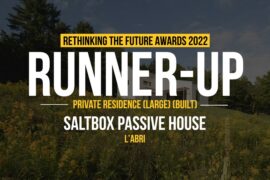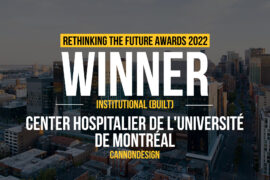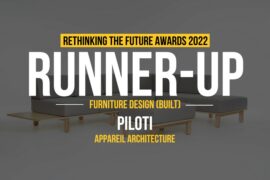Honorable Mention | Cultural
[tabs type=”horizontal”]
[tabs_head]
[tab_title]Project Info[/tab_title]
[tab_title]Details[/tab_title]
[/tabs_head]
[tab]Participant Name: Andrea Ng
University: University of Waterloo
Team Member: Thomas Mahon
Country : Canada[/tab]
[tab]The Blind Minotaur
In Towards a New Architecture, Le Corbusier traces a portion of Pirro Ligorio’s 1561 map of Rome, accompanied above by a collection of primary solids. Le Corbusier saw Rome as a city defined by the juxtaposition of its prominent volumes, a seemingly random composition of platonic solids. The “Lesson of Rome” was to be found in its stark opposition to contemporary ideas of urban axes and city plans.
In Ligorio’s time, the infill stretching between the great monuments was defined by a network of tortuous streets, with few direct routes linking points of interest. While Ligorio’s map appreciates Rome from an abstract vantage above, on street level Rome was a maze. As the city evolved, men like Sixtus V and Mussolini made efforts to cut through the infill and pierce the maze by creating wide, straight avenues often linking prominent nodes. Finally, today there is the subway system, in a sense the antithesis of the original maze, connecting two points and bypassing the city fabric altogether.
This project constitutes the design for a cultural and civic hub connected to the subway line. The entrance to the subway feeds a public piazza flanked by a street market; adjacent can be found a museum and gallery, a pool and spa complex, and a public park scattered with pavilions – all bisected by the ancient Aurelian wall which passes through the site. The innovation of the project lies in the fluid, layered approach we took toward the design.
First, we were interested in making reference to the forma urbis of Rome: the lesson proposed by Le Corbusier of the dynamism of juxtaposed volumes, and the connection between these nodes, the evolution of Rome’s maze. We employed a vocabulary of primary solids, monuments, with a large bar crossing the site, connecting the smaller pieces and functioning at the level of infrastructure. From above, from the vantage of the Aurelian wall’s turret, the design has the character of a chaotic, scattered composition; at street-level there is another reading; and inside the buildings, below the ground, there is another experience again.
Two main programs occupy the buildings, a museum and a spa. It was our intention for the paths of the two programs to intertwine and the spaces to interlock so as to enhance the experience of each. The two paths seem to form a complex maze, but each only follows a single route, akin to a unicursal labyrinth leading inevitably toward the centre. The museum follows a sequence of exhibits while the spa follows the stages involved in Ancient Roman bathing, and the two paths share moments of transparency, curated glimpses from one program into the other. These progressions travel underground, even under the Aurelian wall; above grade the fixed routes dissolve and the shapes rising above the surface create pavilions focused around dining, the final stage of the Ancient Roman bathing routine.
The shape and architecture at each point in the spa sequence was molded by the intended experience of that stage. Likewise, we crafted the spaces and progression of the museum around exhibits and the specific pieces within. The museum showcases Roman representations of the tension of order and chaos, in order to complement the order and disorder inherent within our scheme. The section of the museum within the long bar examines this relationship in Rome’s urban form and its representation through history in maps and drawings. As the museum progresses within the smaller solids it showcases a similar struggle in the human body, through depictions of physical distortion in Roman sculpture. A frequent strategy was to pair an Ancient Roman sculpture with a contemporary echo; the stretched figures of Theseus and the Minotaur set opposite a languid reclining Henry Moore; Picasso’s Vollard Suite seen with the Belvedere Torso it mirrors.
All of these factors – the site, the urban history, the architectural experience, the pieces of art – shaped our project continually and simultaneously throughout the design process. Our endeavour was to create a rich, multi-faceted project – a project which glimpses the layered complexity of the city of Rome.
[/tab]
[/tabs]
If you’ve missed participating in this award, don’t worry. RTF’s next series of Awards for Excellence in Architecture & Design – is open for Registration.
[button color=”black” size=”medium” link=”httpss://www.re-thinkingthefuture.com/awards/” icon=”” target=”false”]Participate Now[/button]
[g-gallery gid=”7525″]





